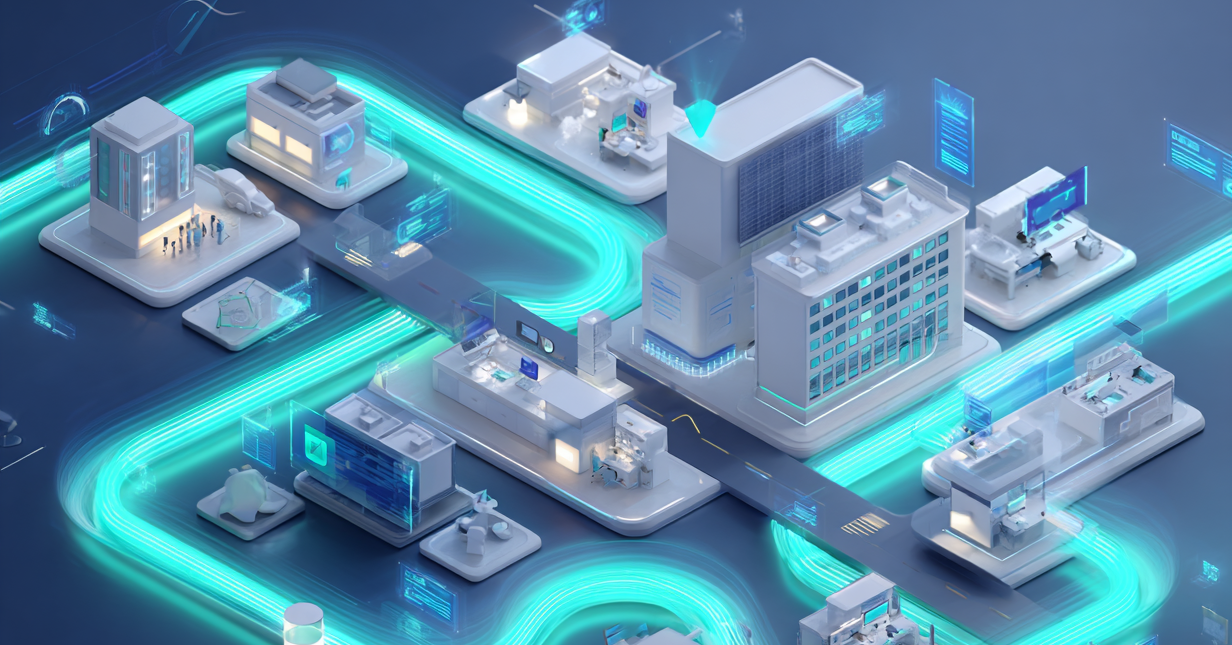Healthcare is changing fast. Organizations are building AI-powered tools to improve efficiency, enhance patient and member experience, and achieve better outcomes. But for many of these solutions—things like care coordination, discharge decisioning, claims adjudication, or prior authorization automation—being reactive is not enough. They need real-time data to function effectively.
The difference between batch and real-time data can mean the difference between an AI tool that delivers real value and one that falls short. Below, we explore where real-time data really matters, what has held healthcare back from using it, what’s different now, and how Productive Edge helps payers and providers bring it to life.
Why Real-Time Data Matters
Healthcare has traditionally run on batch data. Reports generated overnight, claims data processed after submission, dashboards refreshed once a week. That approach works fine for strategic planning, population-level insights, or retrospective reporting.
But batch breaks down when the task at hand depends on immediate information:
-
A provider cannot safely update a discharge plan without the most recent lab results.
-
A care manager scheduling transportation may miss a change if they rely on yesterday’s census.
-
A payer adjudicating a claim needs real-time edits and validations—not corrections hours or days later.
In these cases, lagging information is costly. Patients stay longer than necessary, claims bounce back, and staff time is wasted. Real-time data turns AI from a silent advisor into an active ally that can guide, intervene, and take action in the moment.
What’s Held Healthcare Back—and What’s Different Now
For years, payers and providers struggled to adopt real-time data. The obstacles were significant:
-
Legacy systems built for batch processing, not continuous streaming.
-
Integration complexity with dozens of siloed systems that don’t naturally share data in real-time.
-
Cost and scale of streaming infrastructure, which used to be prohibitively expensive.
-
Compliance and security concerns around HIPAA and PHI in motion.
-
Skills gaps in IT teams more familiar with SQL and ETL than APIs and streaming pipelines.
What’s changed today is the maturity of the ecosystem:
-
FHIR APIs and event notifications now available in EHRs like Epic.
-
Cloud-native data platforms like Snowflake and Databricks that make streaming practical and affordable.
-
Interoperability platforms such as Redox that simplify connectivity with EHRs and provider systems.
-
AI demand that requires up-to-the-minute data to deliver value.
-
Operational pressure driving organizations to reduce costs and improve experience in real-time, not after the fact.
Real-time data is no longer aspirational. The technology is here, the costs are manageable, and the need is urgent. What remains is organizational readiness and prioritization.
Provider Use Cases That Rely on Real-Time Data
Providers depend on live feeds from EHRs, ADT systems, scheduling tools, and staffing platforms to keep operations running smoothly. Here are common scenarios where real-time data is essential:
-
Capacity & Utilization Monitoring — Balance workload and staffing needs using current census and availability, not yesterday’s numbers.
-
Discharge Readiness & Coordination — Trigger the right workflows as soon as clinical milestones are met, helping patients leave sooner and safer.
-
Care Transition Notifications — Share ADT events instantly with downstream providers to avoid care gaps and reduce readmissions.
-
OR Scheduling Optimization — Adjust surgical schedules dynamically when delays, cancellations, or resource conflicts arise.
- Patient Safety Events (Infection Prevention) — Monitor real-time infection risk signals across the inpatient population, streaming vitals and labs to trigger alerts and feed infection control workflows.
Example: A Midwest health system reported a 12% reduction in average length of stay after implementing real-time discharge readiness tracking tied to EHR vitals and lab feeds.
Payer Use Cases That Rely on Real-Time Data
For payers, real-time data means fewer delays, faster resolutions, and smoother workflows. It enables AI tools to move from reporting to intervention. Key areas include:
-
Prior Authorization — Approve or deny requests at the point of care by pulling live clinical details and eligibility data.
-
Claims Status & Adjudication Support — Give providers immediate visibility into claim acceptance, edits, or pended status before rework is required.
-
Care Management AI Agents — Help case managers build and validate service plans with the most current member information.
-
Member Engagement / CRM Agents — Avoid duplicate outreach and improve personalization with real-time interaction tracking.
-
Denial Prevention & Resolution — Stop denials before they happen by validating documentation and rules as claims are submitted.
Example: One large health plan estimated a 20% reduction in claim rework costs after deploying real-time claim edits and AI-driven denial prevention.
Without real-time data, payers risk inefficiencies that ripple through provider networks and frustrate members. With it, they can resolve issues proactively and reduce cost-to-serve.
The Enablers of Real-Time Data
Moving from batch to real-time requires more than new workflows—it demands the right technology and partners. Productive Edge works with a strong ecosystem to make this shift possible:
-
Redox — Unlocks real-time data exchange with EHRs and provider systems. We partner with Redox to simplify connectivity across fragmented clinical systems and deliver normalized, usable feeds into payer and provider workflows.
-
Snowflake — Powers streaming-ready analytics pipelines and provides secure, scalable storage. We help clients build healthcare-specific data models on Snowflake that take advantage of its new streaming and dynamic table features to support AI agents.
-
Databricks — Enables real-time data engineering, machine learning pipelines, and continuous model training. Productive Edge designs and deploys Databricks workflows that handle continuous ingestion and feed AI accelerators with high-quality, real-time data.
-
Epic — Offers APIs and event notifications that make live data streams available across the healthcare system. We work with clients to activate Epic’s FHIR APIs and event-driven services, often in tandem with Redox, to ensure the right data is available at the right time.
Together, these partners and our implementation services help organizations move from lagging reports to live insights and actionable workflows.
Policy Drivers You Can’t Ignore
Regulatory momentum is accelerating the shift toward real-time data:
-
CMS has issued rules around electronic prior authorization that assume fast, API-driven data exchange.
-
ONC interoperability requirements are pushing providers to expose more information through FHIR APIs.
-
Payers and providers who delay risk not only inefficiencies but also regulatory penalties.
These mandates make real-time enablement less of a choice and more of a requirement.
When Real-Time Isn’t Required
It’s important to note that not every workflow needs real-time streaming. Risk stratification, cost of care analysis, and population health dashboards can still run effectively on batch data. In fact, building real-time infrastructure for every use case can be expensive and unnecessary. The real challenge is knowing when immediacy drives value and when it does not.
At Productive Edge, we help clients prioritize. We work with payers and providers to identify which use cases benefit most from real-time, and which ones are best served by existing batch processes. This ensures investments in real-time capabilities deliver a measurable return.
The Road Ahead
Real-time data is a stepping stone, not the finish line. Once organizations establish pipelines for continuous feeds, the next stage is predictive and prescriptive AI. This is where streaming insights feed not just dashboards but decision-making agents that anticipate needs, flag risks before they materialize, and automate routine interventions.
Those who build real-time capability today will be positioned for the next generation of healthcare AI tomorrow.
Ready to Put Real-Time to Work?
The next generation of healthcare AI requires actionable, up-to-the-minute information. The organizations that succeed will be those that harness real-time data for the right use cases while continuing to rely on batch data where it makes sense.
Productive Edge helps payers and providers navigate this balance—designing pipelines, embedding data into AI agents, and delivering results that show up in efficiency, cost reduction, and improved experience.


.png)
.png)
